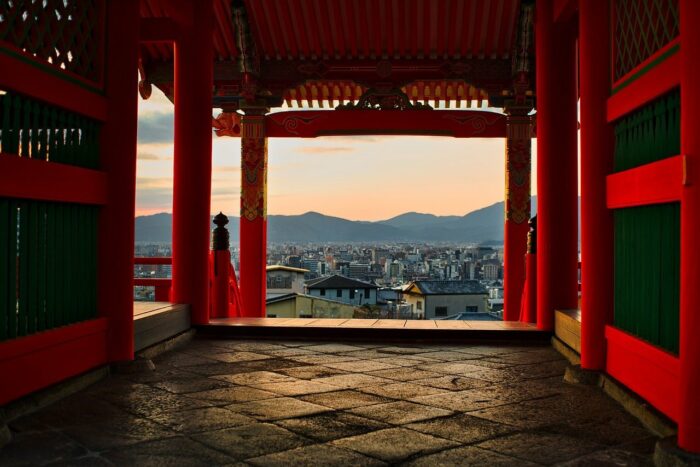Kiyomizu-dera: A Guide to Kyoto’s Iconic Temple
Kiyomizu-dera is a Buddhist temple located in Kyoto, Japan. It is one of the most celebrated temples in Japan and is a part of the Historic Monuments of Ancient Kyoto UNESCO World Heritage site. The temple is known for its stunning architecture and beautiful views of the city.
The temple was founded in 780 on the site of the Otowa Waterfall in the wooded hills east of Kyoto. Kiyomizu-dera derives its name from the fall’s pure waters, which are believed to have healing properties. The temple is also famous for its wooden stage, which juts out over the hillside and offers visitors a breathtaking view of the city below. The stage is supported by massive pillars and is one of the most famous images of Japan.
Kiyomizu-dera has a rich history and is an important cultural landmark in Japan. It is a popular destination for tourists and locals alike, attracting millions of visitors each year. The temple is also an active place of worship, and visitors can observe traditional Buddhist practices and rituals while visiting.
Location
Kiyomizu-dera is part of the Historic Monuments of Ancient Kyoto UNESCO World Heritage Site. The temple is situated on a small mountain on the east side of Kyoto, in the Higashiyama district, and offers a commanding view of the city.
The temple’s address is 1-294, Kiyomizu, Higashiyama-ku, Kyoto-shi, Kyoto, 605-0862, Japan. Visitors can reach the temple by taking a bus from Kyoto Station, with the journey taking around 20 minutes. Alternatively, visitors can take a train to JR Kyoto Station and then take a bus or taxi to Kiyomizu-michi, which is a 10-minute walk from the temple.
It is important to note that there are only two routes to the temple ground: one route from the Nio-mon Gate on top of the Kiyomizu-zaka hill and the other route from the emergency road entrance on the top of the Chawan-zaka hill. Visitors should exercise caution when using online mapping apps, as they may not accurately reflect these routes.
History
Kiyomizu-dera was founded in 780 AD during the Heian period by the shogun, Sakanoue no Tamuramaro. Shortly afterwards, it was designated an imperial temple in 805 AD.
The location of the temple was established by the Buddhist monk Enchin, who had a vision in a dream that instructed him to find a spring of the purest water. Following the Kizugawa River to the foot of Mount Otowa, Enchin encountered an ascetic mountain priest who gave him a…
Click Here to Read the Full Original Article at Out of Town Blog…
